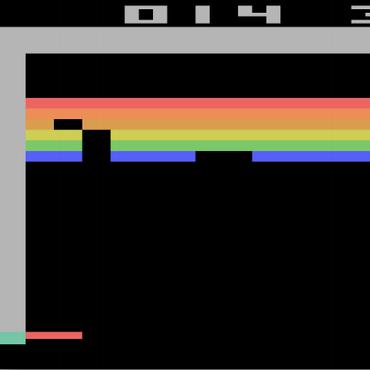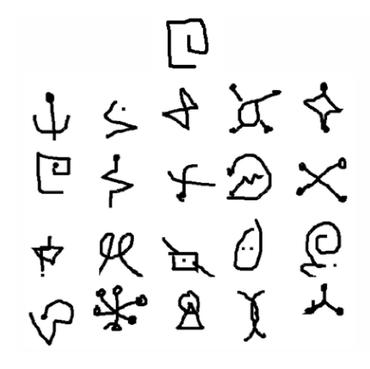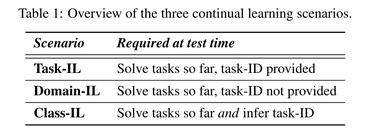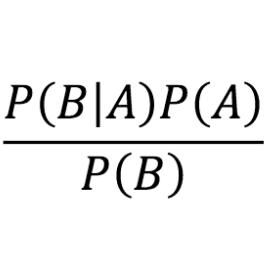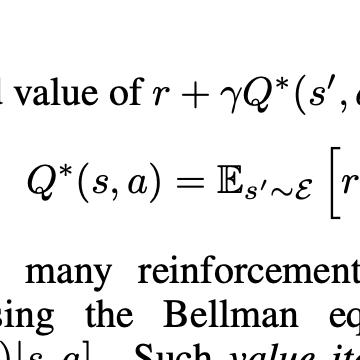Search Results for author: Daan Wierstra
Found 31 papers, 22 papers with code
S3TA: A Soft, Spatial, Sequential, Top-Down Attention Model
no code implementations • ICLR 2019 • Alex Mott, Daniel Zoran, Mike Chrzanowski, Daan Wierstra, Danilo J. Rezende
We present a soft, spatial, sequential, top-down attention model (S3TA).
Scaling Instructable Agents Across Many Simulated Worlds
no code implementations • 13 Mar 2024 • SIMA Team, Maria Abi Raad, Arun Ahuja, Catarina Barros, Frederic Besse, Andrew Bolt, Adrian Bolton, Bethanie Brownfield, Gavin Buttimore, Max Cant, Sarah Chakera, Stephanie C. Y. Chan, Jeff Clune, Adrian Collister, Vikki Copeman, Alex Cullum, Ishita Dasgupta, Dario de Cesare, Julia Di Trapani, Yani Donchev, Emma Dunleavy, Martin Engelcke, Ryan Faulkner, Frankie Garcia, Charles Gbadamosi, Zhitao Gong, Lucy Gonzales, Kshitij Gupta, Karol Gregor, Arne Olav Hallingstad, Tim Harley, Sam Haves, Felix Hill, Ed Hirst, Drew A. Hudson, Jony Hudson, Steph Hughes-Fitt, Danilo J. Rezende, Mimi Jasarevic, Laura Kampis, Rosemary Ke, Thomas Keck, Junkyung Kim, Oscar Knagg, Kavya Kopparapu, Andrew Lampinen, Shane Legg, Alexander Lerchner, Marjorie Limont, YuLan Liu, Maria Loks-Thompson, Joseph Marino, Kathryn Martin Cussons, Loic Matthey, Siobhan Mcloughlin, Piermaria Mendolicchio, Hamza Merzic, Anna Mitenkova, Alexandre Moufarek, Valeria Oliveira, Yanko Oliveira, Hannah Openshaw, Renke Pan, Aneesh Pappu, Alex Platonov, Ollie Purkiss, David Reichert, John Reid, Pierre Harvey Richemond, Tyson Roberts, Giles Ruscoe, Jaume Sanchez Elias, Tasha Sandars, Daniel P. Sawyer, Tim Scholtes, Guy Simmons, Daniel Slater, Hubert Soyer, Heiko Strathmann, Peter Stys, Allison C. Tam, Denis Teplyashin, Tayfun Terzi, Davide Vercelli, Bojan Vujatovic, Marcus Wainwright, Jane X. Wang, Zhengdong Wang, Daan Wierstra, Duncan Williams, Nathaniel Wong, Sarah York, Nick Young
Building embodied AI systems that can follow arbitrary language instructions in any 3D environment is a key challenge for creating general AI.
Towards Interpretable Reinforcement Learning Using Attention Augmented Agents
1 code implementation • NeurIPS 2019 • Alex Mott, Daniel Zoran, Mike Chrzanowski, Daan Wierstra, Danilo J. Rezende
Inspired by recent work in attention models for image captioning and question answering, we present a soft attention model for the reinforcement learning domain.
Relational recurrent neural networks
2 code implementations • NeurIPS 2018 • Adam Santoro, Ryan Faulkner, David Raposo, Jack Rae, Mike Chrzanowski, Theophane Weber, Daan Wierstra, Oriol Vinyals, Razvan Pascanu, Timothy Lillicrap
Memory-based neural networks model temporal data by leveraging an ability to remember information for long periods.
 Ranked #72 on
Language Modelling
on WikiText-103
Ranked #72 on
Language Modelling
on WikiText-103
Relational inductive biases, deep learning, and graph networks
31 code implementations • 4 Jun 2018 • Peter W. Battaglia, Jessica B. Hamrick, Victor Bapst, Alvaro Sanchez-Gonzalez, Vinicius Zambaldi, Mateusz Malinowski, Andrea Tacchetti, David Raposo, Adam Santoro, Ryan Faulkner, Caglar Gulcehre, Francis Song, Andrew Ballard, Justin Gilmer, George Dahl, Ashish Vaswani, Kelsey Allen, Charles Nash, Victoria Langston, Chris Dyer, Nicolas Heess, Daan Wierstra, Pushmeet Kohli, Matt Botvinick, Oriol Vinyals, Yujia Li, Razvan Pascanu
As a companion to this paper, we have released an open-source software library for building graph networks, with demonstrations of how to use them in practice.
Learning to Search with MCTSnets
2 code implementations • ICML 2018 • Arthur Guez, Théophane Weber, Ioannis Antonoglou, Karen Simonyan, Oriol Vinyals, Daan Wierstra, Rémi Munos, David Silver
They are most typically solved by tree search algorithms that simulate ahead into the future, evaluate future states, and back-up those evaluations to the root of a search tree.
Learning and Querying Fast Generative Models for Reinforcement Learning
no code implementations • 8 Feb 2018 • Lars Buesing, Theophane Weber, Sebastien Racaniere, S. M. Ali Eslami, Danilo Rezende, David P. Reichert, Fabio Viola, Frederic Besse, Karol Gregor, Demis Hassabis, Daan Wierstra
A key challenge in model-based reinforcement learning (RL) is to synthesize computationally efficient and accurate environment models.
Learning Dynamic State Abstractions for Model-Based Reinforcement Learning
no code implementations • ICLR 2018 • Lars Buesing, Theophane Weber, Sebastien Racaniere, S. M. Ali Eslami, Danilo Rezende, David Reichert, Fabio Viola, Frederic Besse, Karol Gregor, Demis Hassabis, Daan Wierstra
A key challenge in model-based reinforcement learning (RL) is to synthesize computationally efficient and accurate environment models.
Learning model-based planning from scratch
2 code implementations • 19 Jul 2017 • Razvan Pascanu, Yujia Li, Oriol Vinyals, Nicolas Heess, Lars Buesing, Sebastien Racanière, David Reichert, Théophane Weber, Daan Wierstra, Peter Battaglia
Here we introduce the "Imagination-based Planner", the first model-based, sequential decision-making agent that can learn to construct, evaluate, and execute plans.
Imagination-Augmented Agents for Deep Reinforcement Learning
2 code implementations • NeurIPS 2017 • Théophane Weber, Sébastien Racanière, David P. Reichert, Lars Buesing, Arthur Guez, Danilo Jimenez Rezende, Adria Puigdomènech Badia, Oriol Vinyals, Nicolas Heess, Yujia Li, Razvan Pascanu, Peter Battaglia, Demis Hassabis, David Silver, Daan Wierstra
We introduce Imagination-Augmented Agents (I2As), a novel architecture for deep reinforcement learning combining model-free and model-based aspects.
 Model-based Reinforcement Learning
Model-based Reinforcement Learning
 reinforcement-learning
+1
reinforcement-learning
+1
Comparison of Maximum Likelihood and GAN-based training of Real NVPs
no code implementations • 15 May 2017 • Ivo Danihelka, Balaji Lakshminarayanan, Benigno Uria, Daan Wierstra, Peter Dayan
We train a generator by maximum likelihood and we also train the same generator architecture by Wasserstein GAN.
Recurrent Environment Simulators
1 code implementation • 7 Apr 2017 • Silvia Chiappa, Sébastien Racaniere, Daan Wierstra, Shakir Mohamed
Models that can simulate how environments change in response to actions can be used by agents to plan and act efficiently.
Neural Episodic Control
4 code implementations • ICML 2017 • Alexander Pritzel, Benigno Uria, Sriram Srinivasan, Adrià Puigdomènech, Oriol Vinyals, Demis Hassabis, Daan Wierstra, Charles Blundell
Deep reinforcement learning methods attain super-human performance in a wide range of environments.
PathNet: Evolution Channels Gradient Descent in Super Neural Networks
1 code implementation • 30 Jan 2017 • Chrisantha Fernando, Dylan Banarse, Charles Blundell, Yori Zwols, David Ha, Andrei A. Rusu, Alexander Pritzel, Daan Wierstra
It is a neural network algorithm that uses agents embedded in the neural network whose task is to discover which parts of the network to re-use for new tasks.
 Ranked #5 on
Continual Learning
on F-CelebA (10 tasks)
Ranked #5 on
Continual Learning
on F-CelebA (10 tasks)
Variational Intrinsic Control
1 code implementation • 22 Nov 2016 • Karol Gregor, Danilo Jimenez Rezende, Daan Wierstra
In this paper we introduce a new unsupervised reinforcement learning method for discovering the set of intrinsic options available to an agent.
 Reinforcement Learning (RL)
Reinforcement Learning (RL)
 Unsupervised Reinforcement Learning
Unsupervised Reinforcement Learning
Model-Free Episodic Control
3 code implementations • 14 Jun 2016 • Charles Blundell, Benigno Uria, Alexander Pritzel, Yazhe Li, Avraham Ruderman, Joel Z. Leibo, Jack Rae, Daan Wierstra, Demis Hassabis
State of the art deep reinforcement learning algorithms take many millions of interactions to attain human-level performance.
Matching Networks for One Shot Learning
26 code implementations • NeurIPS 2016 • Oriol Vinyals, Charles Blundell, Timothy Lillicrap, Koray Kavukcuoglu, Daan Wierstra
Our algorithm improves one-shot accuracy on ImageNet from 87. 6% to 93. 2% and from 88. 0% to 93. 8% on Omniglot compared to competing approaches.
Convolution by Evolution: Differentiable Pattern Producing Networks
no code implementations • 8 Jun 2016 • Chrisantha Fernando, Dylan Banarse, Malcolm Reynolds, Frederic Besse, David Pfau, Max Jaderberg, Marc Lanctot, Daan Wierstra
In this work we introduce a differentiable version of the Compositional Pattern Producing Network, called the DPPN.
One-shot Learning with Memory-Augmented Neural Networks
11 code implementations • 19 May 2016 • Adam Santoro, Sergey Bartunov, Matthew Botvinick, Daan Wierstra, Timothy Lillicrap
Despite recent breakthroughs in the applications of deep neural networks, one setting that presents a persistent challenge is that of "one-shot learning."
Towards Conceptual Compression
1 code implementation • NeurIPS 2016 • Karol Gregor, Frederic Besse, Danilo Jimenez Rezende, Ivo Danihelka, Daan Wierstra
We introduce a simple recurrent variational auto-encoder architecture that significantly improves image modeling.
 Ranked #64 on
Image Generation
on CIFAR-10
(bits/dimension metric)
Ranked #64 on
Image Generation
on CIFAR-10
(bits/dimension metric)
One-Shot Generalization in Deep Generative Models
no code implementations • 16 Mar 2016 • Danilo Jimenez Rezende, Shakir Mohamed, Ivo Danihelka, Karol Gregor, Daan Wierstra
In particular, humans have an ability for one-shot generalization: an ability to encounter a new concept, understand its structure, and then be able to generate compelling alternative variations of the concept.
Continuous control with deep reinforcement learning
159 code implementations • 9 Sep 2015 • Timothy P. Lillicrap, Jonathan J. Hunt, Alexander Pritzel, Nicolas Heess, Tom Erez, Yuval Tassa, David Silver, Daan Wierstra
We adapt the ideas underlying the success of Deep Q-Learning to the continuous action domain.
 Ranked #2 on
OpenAI Gym
on HalfCheetah-v4
Ranked #2 on
OpenAI Gym
on HalfCheetah-v4
Weight Uncertainty in Neural Networks
37 code implementations • 20 May 2015 • Charles Blundell, Julien Cornebise, Koray Kavukcuoglu, Daan Wierstra
We introduce a new, efficient, principled and backpropagation-compatible algorithm for learning a probability distribution on the weights of a neural network, called Bayes by Backprop.
Human level control through deep reinforcement learning
7 code implementations • 25 Feb 2015 • Volodymyr Mnih, Koray Kavukcuoglu, David Silver, Andrei A. Rusu, Joel Veness, Marc G. Bellemare, Alex Graves, Martin Riedmiller, Andreas K. Fidjeland, Georg Ostrovski, Stig Petersen, Charles Beattie, Amir Sadik, Ioannis Antonoglou, Helen King, Dharshan Kumaran, Daan Wierstra, Shane Legg1 & Demis Hassabis
We demonstrate that the deep Q-network agent, receiving only the pixels and the game score as inputs, was able to surpass the performance of all previous algorithms and achieve a level comparable to that of a professional human games tester across a set of 49 games, using the same algorithm, network architecture and hyperparameters.
DRAW: A Recurrent Neural Network For Image Generation
20 code implementations • 16 Feb 2015 • Karol Gregor, Ivo Danihelka, Alex Graves, Danilo Jimenez Rezende, Daan Wierstra
This paper introduces the Deep Recurrent Attentive Writer (DRAW) neural network architecture for image generation.
 Ranked #70 on
Image Generation
on CIFAR-10
(bits/dimension metric)
Ranked #70 on
Image Generation
on CIFAR-10
(bits/dimension metric)
Deterministic Policy Gradient Algorithms
1 code implementation • International Conference on Machine Learning 2014 • David Silver, Guy Lever, Nicolas Heess, Thomas Degris, Daan Wierstra, Martin Riedmiller
In this paper we consider deterministic policy gradient algorithms for reinforcement learning with continuous actions.
Stochastic Backpropagation and Approximate Inference in Deep Generative Models
5 code implementations • 16 Jan 2014 • Danilo Jimenez Rezende, Shakir Mohamed, Daan Wierstra
We marry ideas from deep neural networks and approximate Bayesian inference to derive a generalised class of deep, directed generative models, endowed with a new algorithm for scalable inference and learning.
Playing Atari with Deep Reinforcement Learning
110 code implementations • 19 Dec 2013 • Volodymyr Mnih, Koray Kavukcuoglu, David Silver, Alex Graves, Ioannis Antonoglou, Daan Wierstra, Martin Riedmiller
We present the first deep learning model to successfully learn control policies directly from high-dimensional sensory input using reinforcement learning.
 Ranked #1 on
Atari Games
on Atari 2600 Pong
Ranked #1 on
Atari Games
on Atari 2600 Pong
Deep AutoRegressive Networks
no code implementations • 31 Oct 2013 • Karol Gregor, Ivo Danihelka, andriy mnih, Charles Blundell, Daan Wierstra
We introduce a deep, generative autoencoder capable of learning hierarchies of distributed representations from data.
Variational Learning for Recurrent Spiking Networks
no code implementations • NeurIPS 2011 • Danilo J. Rezende, Daan Wierstra, Wulfram Gerstner
We derive a plausible learning rule updating the synaptic efficacies for feedforward, feedback and lateral connections between observed and latent neurons.
Natural Evolution Strategies
1 code implementation • 22 Jun 2011 • Daan Wierstra, Tom Schaul, Tobias Glasmachers, Yi Sun, Jürgen Schmidhuber
This paper presents Natural Evolution Strategies (NES), a recent family of algorithms that constitute a more principled approach to black-box optimization than established evolutionary algorithms.



